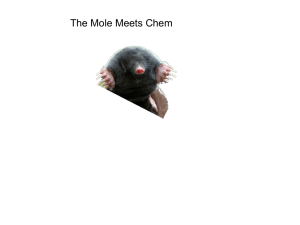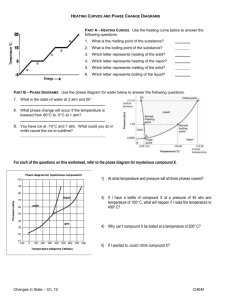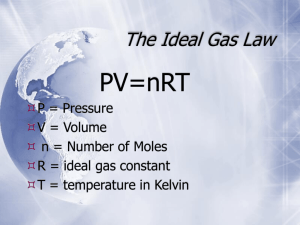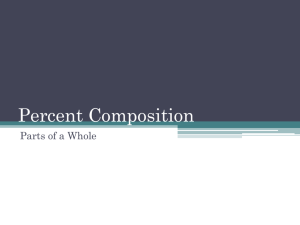Physical Chemistry Exam Questions and Solutions
advertisement
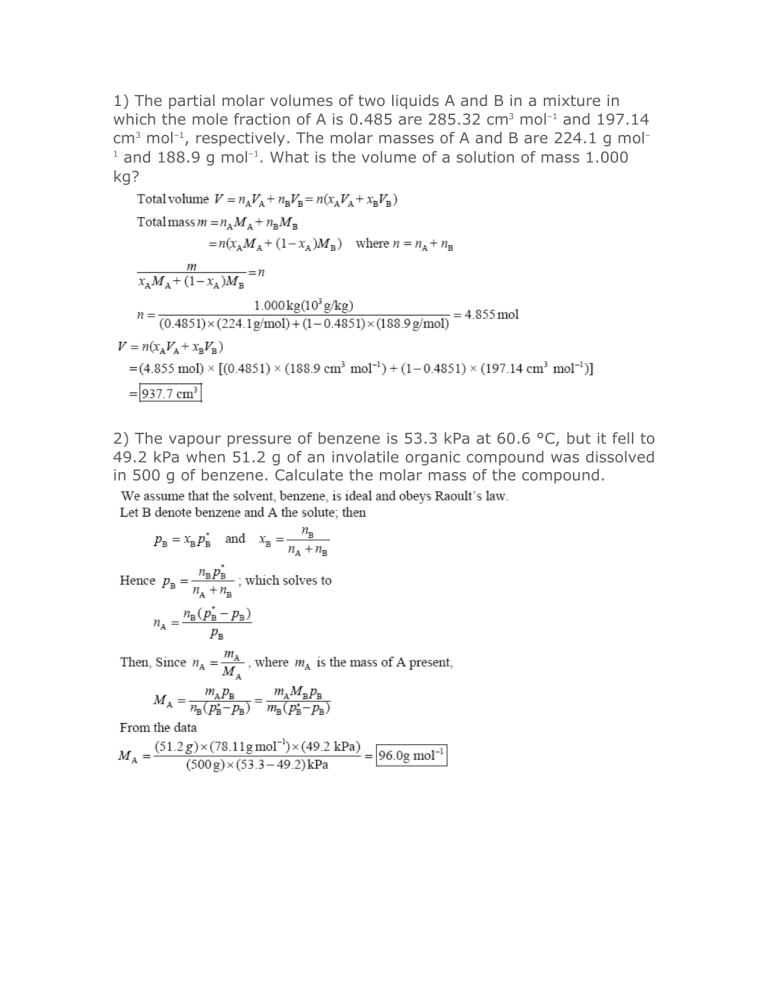
1) The partial molar volumes of two liquids A and B in a mixture in which the mole fraction of A is 0.485 are 285.32 cm3 mol–1 and 197.14 cm3 mol–1, respectively. The molar masses of A and B are 224.1 g mol– 1 and 188.9 g mol–1. What is the volume of a solution of mass 1.000 kg? 2) The vapour pressure of benzene is 53.3 kPa at 60.6 °C, but it fell to 49.2 kPa when 51.2 g of an involatile organic compound was dissolved in 500 g of benzene. Calculate the molar mass of the compound. 3) The addition of 200 g of a compound to 1000 g of benzene lowered the freezing point of the solvent by 3.50 K. Calculate the molar mass of the compound. 4) The osmotic pressure of an aqueous solution at 298 K is 101.3 kPa. Calculate the freezing point of the solution. 5) Consider a container of volume 2.0 dm3 that is divided into two compartments of equal size. In the left compartment there is nitrogen at 1.0 atm and 25 °C; in the right compartment there is oxygen at the same temperature and pressure. Calculate the entropy and Gibbs energy of mixing when the partition is removed. Assume that the gases are perfect. 6) The mole fraction of CO2 in the atmosphere has risen from 0.000314 in 1962 to 0.000360 in 2005. Use Henry’s law and the data in Table 5.1 to calculate the solubility (as a molality) of CO2 in the ocean at 25 °C. 7) Given that p*(H2O) = 0.02308 atm and p(H2O) = 0.02171 atm in a solution in which 0.207 kg of a non-volatile solute (M = 298 g mol–1) is dissolved in 0.892 kg water at 293 K, calculate the activity and activity coefficient of water in the solution. 8) Calculate the ionic strength of a solution that is 0.10 mol kg–1 in NaCl(aq) and 0.20 mol kg–1 in CuSO4(aq).


